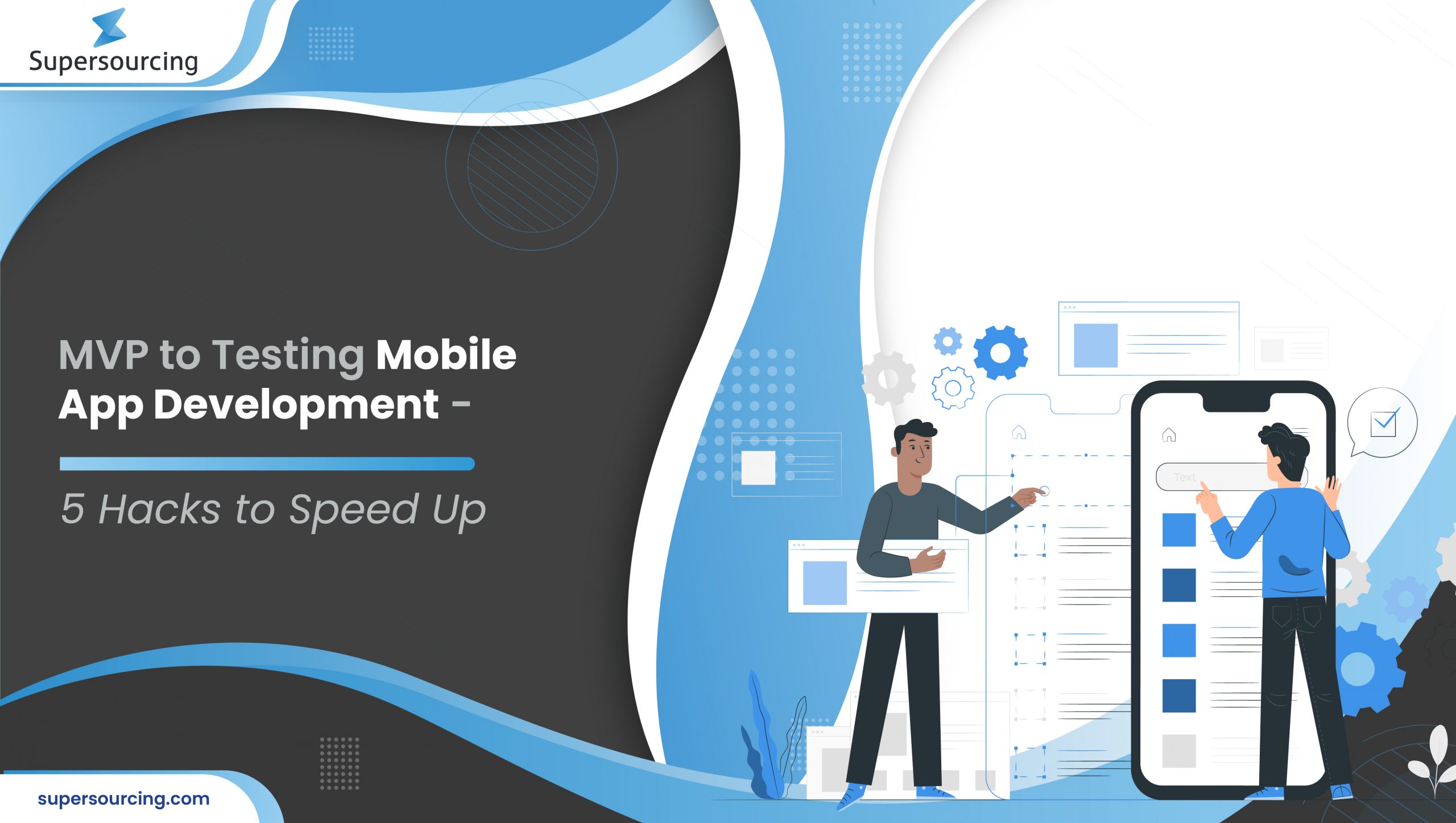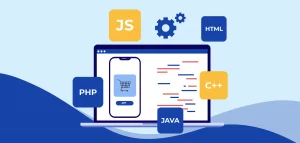Table of content
Mobile app development has been going through something of a golden
period in the last few years. The number of mobile apps is increasing
exponentially, and so are the mobile phone users. Additionally, a more
significant proportion of the population is having the access to the
internet, which has further improved the chances of new mobile apps
succeeding.
The number of platforms that offer users the capability to build
mobile apps without any coding
experience or knowledge has been growing by the year. As more and more
people have begun opting to create mobile apps, the number of mobile
apps in the market has also increased. It has scaled up the competition
in every genre of apps since creating novel mobile apps has now
transferred to everyone with an idea.
Given the above facts, mobile app development must be made more
efficient to set yourself apart from the competition. Additionally,
developers and companies must have the ability to speed up their mobile
app development process to improve their time-to-market and release apps
before competitors can.
How to Speed Up Mobile App Development in five ways?
1. MVP (Minimum Viable Product)
A
Minimum Viable Product
is defined as a product that provides only the main USP of your final
product. App developers create the MVP to check whether the technology
begging their main features is robust and whether the prospective users
of the product find any use in this feature. The MVP is generally tested
on many users before being improved further and released to the general
public.
Here are the steps using which you can create a Minimum Viable Product.
-
Firstly, try and figure out the problem you are solving and who
your target customer is. For this purpose, you might need to conduct
a complete market survey. Through this survey, you can attempt to
understand what the pain points of your customers are. Based on
these pain points, you can figure out a design for your product. In mobile app development, it is also essential for you to figure out
the customer base that you will be selling this product to. It is
crucial since the app’s design and feature set needs to be directed
toward this customer cohort. -
Now, you must conduct a proper analysis of your competitors. If your
competitors are using any open-source software, find out the
intricacies and limitations of this software. Download all the apps
that will directly be competing with you and determine the feature
gaps that exist within them. Read the customers’ reviews on the app
store for each of these apps and check the most common complaints that
users have against these apps. This exercise will enable you to put up
a much better product than your competitors. If you can fill the
feature gaps and relieve your app of the complaints users have with
others. -
Next, you must define the user flow of your MVP. In the minimum viable product, you must focus only on the main service that your app will be
offering. For example, if your app is selling products of a
particular genre, your overall flow must enable the user to find a
product, add the product to the cart, and pay for the product. Try
and make this user flow as lucid as you can. The more complex this
flow gets, the lower the chance of users shifting to your app. -
Finally, you must list down all the features that you think are
necessary for your app. There are probably several features that you
want to market to people. In the survey of prospective users you
conducted earlier, you might have gained some insight into which
features are more important to people and which features are
relatively less important. Once you have this information, you can
prioritize the features that you will include in your MVP.
At the end of all this analysis, you need to build your app and test
it. The first test is carried out virtually to check for bugs and any
features that do not work. When the test results are successful, you can
test your app on prospective users and analyze their reviews.
2. Go Agile
The agile mobile app development strategy is very similar to the most
viable product strategy but includes some more iterations. In agile app
development, the MVP is first published, and features are then
continuously added based on the users’ responses. The following are the
steps of every agile iteration.
-
The first stage is the Planning Stage. During this stage, you can plan out the number of hours of
resources required, the development platform you will use, the type
of app you are aiming for, the genre that your app will belong to
and other technicalities. -
Once you have planned your technological requirements, you can dive
deep into the features required of your app. It can include a brief
customer survey to determine the most important features for your
prospective customers. These are the features that the app will then
be built around. -
Now, you need to Design the App. The app’s design phase is the most integral since it goes from
planning the app’s flow to the user interface. The app’s design is
often a make-or-break feature for the customer and must be paid
great heed to. -
Next is the Development Phase. Based on the technological, feature-based, and design decisions
you had made earlier, you can now develop the app on your chosen
platform. Make sure that your development process translates your
requirements as closely as possible. -
In the Testing Phase
that follows, you must thoroughly test the app for bugs and
performance. This first sub-step can be automated testing, in which an algorithm attempts to find out whether there are any
problems with the app. Next, you can do a small focus group test to
determine problems that users might face. -
Finally, you draw up the application documentation, wait for
approval, and release the app.
Do keep in mind that a single cycle is never enough to develop the
complete app. Every time you put some features out in public, you will
receive reviews. Based on these reviews, the agile cycle needs to be
followed again and again repeatedly.
3. Basic and Simple Wireframes
A wireframe is as simple a concept as it sounds. It is the basic
blueprint or schematic of the app that you are looking to create. A
wireframe provides you with an idea regarding the steps you need to
create the perfect mobile app. Wireframes also speed up your mobile app
development process by laying out a clear plan and giving you a target
that you need to achieve.
-
To create a mobile app wireframe, you first need to focus on the
features you are keen on delivering. Even before you have begun to
develop the first blueprint, review the app genre, you will be
developing the app for and the major demands of consumers in that
genre. The app that you will be creating will be built around these
demands. -
Next, you can start focusing on the user experience. It is where
the user flow and the design first come into the picture. Determine
your app’s main motive and design the easiest way for a user to
fulfil that motive. -
You should now start to create your design on paper. You can look
at your main competitors’ UX templates and try to determine what
makes these templates work. Aim to understand what design features
your genre’s users tend to favour and incorporate them within your
app. -
There are various ways that you can build your wireframe. While
sketching an app screen like a storyboard is a more traditional
method, you can also use online portals to create app wireframes.
These portals have fantastic tools that help you recreate your user
interface to the most accurate extent possible. -
After creating the wireframe, you need to prototype your app. It
means checking whether all the primary user interface options of
your wireframe are working. You can walk through different user
flows and check whether each of them leads to the intended
outcome. -
Once you have ascertained that your app is working, you can present
your idea and begin working on its back-end aspects.
4. Outsourcing
Outsourcing
is one of the most common methods mobile app developers use to speed up
their app development process – especially if the app creators have no
app development or coding expertise themselves. However, there are
several considerations to be made when you are choosing an app
development partner.
-
Most importantly, you need to check the expertise that different
app developers or app development companies show through their
previous work. You then need to determine whether this expertise is
in line with the motives of your app. -
Even if the mobile app developers have a favourable set of apps
previously created, you should check with other similar companies
about the market reputation of these app developers. Check whether
they are professional and punctual and whether their products
generally require significant reworks. -
You can also hold consultations with various app development
companies and try to find out their response to your needs. Choose
the app development company that understands your needs best.
Previous experience generally helps companies determine what you
want, and inexperienced players can have difficulty getting to the
crux of your issue. -
Even before you start approaching app development partners, you
should decide on a budget that you will be spending on app
development. Outsourcing app development
can come with significant costs depending on the type of app
developer you are looking at and the app developer’s location.
5. Automated Testing
Automated testing can be effective in reducing the time-to-market of
your mobile applications. Through automated testing, you can assess your
mobile app efficiently and in significantly less time. There are several
advantages to automated testing.
-
Automated testing allows for a much faster feedback cycle for your
app by virtue of experiencing no human intervention. The whole app
development team saves testing time and can utilize this time in
preparing documentation and paperwork. It helps you in releasing
your app much faster than through conventional testing. -
Additionally, automated
testing
saves you business expenses. Regardless of how expensive your
automated testing subscription or infrastructure is, it will likely
not be as expensive as hiring a whole testing team. Moreover,
automated testing does not have specific hours of work and can
continuously provide results relevant to you. -
The coverage of use cases provided by automated testing is also
much more comprehensive. If you are automating the testing process
yourself, you can introduce several new use cases that are more
important to you. Otherwise, all use cases are tested to ensure that
the chances of failure are minimal. -
As compared to a human testing team, automated testing
will also provide much deeper insights into your app’s robustness
through advanced analytics. It also offers more features and the
ability to customize testing as per your needs and
requirements.
Conclusion
In the highly competitive mobile app development market we are presented
with today, getting your app before users faster is more important than
ever. The above hacks can be extremely useful in ensuring the same and a
more robust and comprehensive app for your user.
Therefore, for such quality mobile app development Supersourcing can be the best assistance to you. Share your business idea
along with brief details and in a day you are going to witness a number of
agency options to build the app. The agencies are experts in their
respective domains and deliver the best quality product and customer
service.







